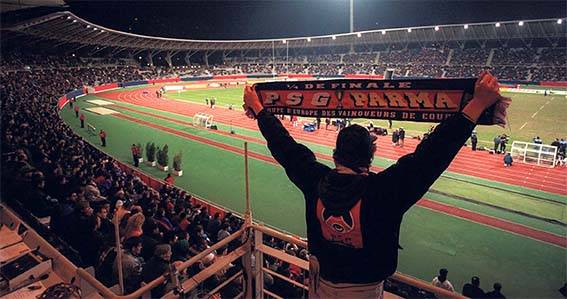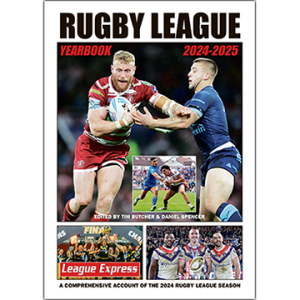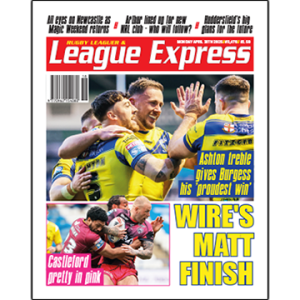
Our journey around the villages, towns and cities that have rugby league running through their veins heads across the English Channel.
CATALANS Dragons have just started their 20th Super League campaign – 27 years after the dust was settling on the competition’s first attempted foray into France.
Paris Saint Germain were in at the outset after the seismic shift to a summer-based game in the northern hemisphere, fuelled by the millions of media giants News Corporation.
However the capital side who hosted – and won – the historic first Super League match (against Sheffield Eagles), were gone after two seasons.
It’s very fair to say 1996 was British rugby league’s most momentous year since since 22 clubs broke away from the Rugby Union in 1895 to form the Northern Union, heralding the arrival of the new code.
A century of tradition was cast aside in the attempt, driven by ambitious Rugby Football League chief executive Maurice Lindsay, to breathe new life into the financially-challenged sport and propel it into a bright new era, with expansion into Europe a key aim.
France was an obvious first port of call, given the existing, albeit chequered, presence of the game there.
As opposed to England, the heartland was the south, and there was talk of elevating Toulouse Olympique for the inaugural Super League season (of course they eventually played in the division in 2022).
However it was decided to focus on Paris, a city which by the end of the 19th century had five recognised union teams and had in December 1933 staged an exhibition rugby league match considered important to the establishment less than four months later of the French federation for ‘rugby a treize’.
Following development work by both the RFL and the governing body of the game in Australia, the Kangaroos took on a British select side towards the end of their fifth tour.
After plans to play at the Stade Buffalo, best known for cycling and not far from the city centre, fell through, the match took place at Stade Pershing, a mainly football venue out on the east side.
Australia had just been whitewashed in the Ashes series, but facing only three players – Wigan fullback Jim Sullivan, Castleford centre Arthur Atkinson and Widnes prop Nat Silcock – who had featured for the Lions in the final Test at Swinton, won 63-13.
The spectacle was witnessed by around 5,000 enthusiastic spectators, some of whom carried Eastern Suburbs centre Dave Brown, a star man in the victory, shoulder high back to the dressing rooms.
The seeds had been sown across the Channel, and with former France union forward and champion boxer Jean Galia a central figure, rugby league took hold.
Along with Bordeaux, Marseilles and Toulouse, Paris became a common venue for the national team, Les Chanticleers or Tricolores, whose first match was a 32-21 defeat by England, this time at Stade Buffalo and watched by 20,000, soon after the formation of the French federation.
The Stade de Paris, home of football club Red Star in the north of the city, was also used on occasions before the Second World War.
After it, the larger Parc des Princes to the south-west of the centre, which until the opening of the Stade de France in 1998 was the premier Parisian sporting venue, became the go-to spot.
It was there that the first Rugby League World Cup final took place in November 1954, when Huddersfield forward Dave Valentine skippered Great Britain to a 16-12 win over the free-flowing Chanticleers, captained by legendary chain-smoking fullback Puig Aubert, in front of 30,368 (France had earlier seen off New Zealand 22-13 at the ground with 13,240 present).
While Parc des Princes – which also staged a tie at the France-hosted 1972 World Cup (Australia beat New Zealand 9-5) – is the home of the Paris Saint-Germain footballing juggernaut, the rugby league side played at Stade Charlety, not too far from the site of Stade Buffalo, which was demolished in 1957.
Also used for football and rugby union, Stade Charlety staged that milestone Super League match between the freshly-formed Paris St Germain, initially led by former France halfback and coach Michel Mazare, and Sheffield on Friday, 29th March, 1996.
The home team hit the ground running, with former Sheffield back Freddie Banquet scoring the competition’s first try after ten minutes to set the platform for a 30-34 victory watched by an impressive 17,873.
Paris SG, whose French playing core was supported by a number of Australians and Kiwis, went on to chalk up two further wins and a draw, ending up second-bottom of a table which as well as Sheffield (seventh), also included, in finishing order, St Helens, the inaugural champions (there were no play-offs for the first two years), Wigan, Bradford, London Broncos, Warrington, Halifax, Oldham, Castleford, Leeds and Workington.
Their form wasn’t helped by a number of ‘shared’ squad members continuing to play in the French domestic competition during the early part of the season.
But with an average crowd of more than 8,000, at the end of that first campaign, the venture was generally accepted as a success.
However the following season, which began with Australian Peter Mulholland in the hot seat before he was replaced by ex-Wigan and Great Britain forward Andy Goodway, the club struggled on and off the field under a variety of problems and crowds slumped.
And while Paris SG secured six victories to escape the wooden spoon (Oldham were bottom), it was decided to withdraw their Super League membership.
The only significant rugby league activity in Paris since was during the 2000 World Cup, when Stade Charlety was the scene of two group matches, Papua New Guinea beating France 23-20 and Tonga defeating South Africa 66-18.
First published in Rugby League World magazine, Issue 506 (March 2025)




